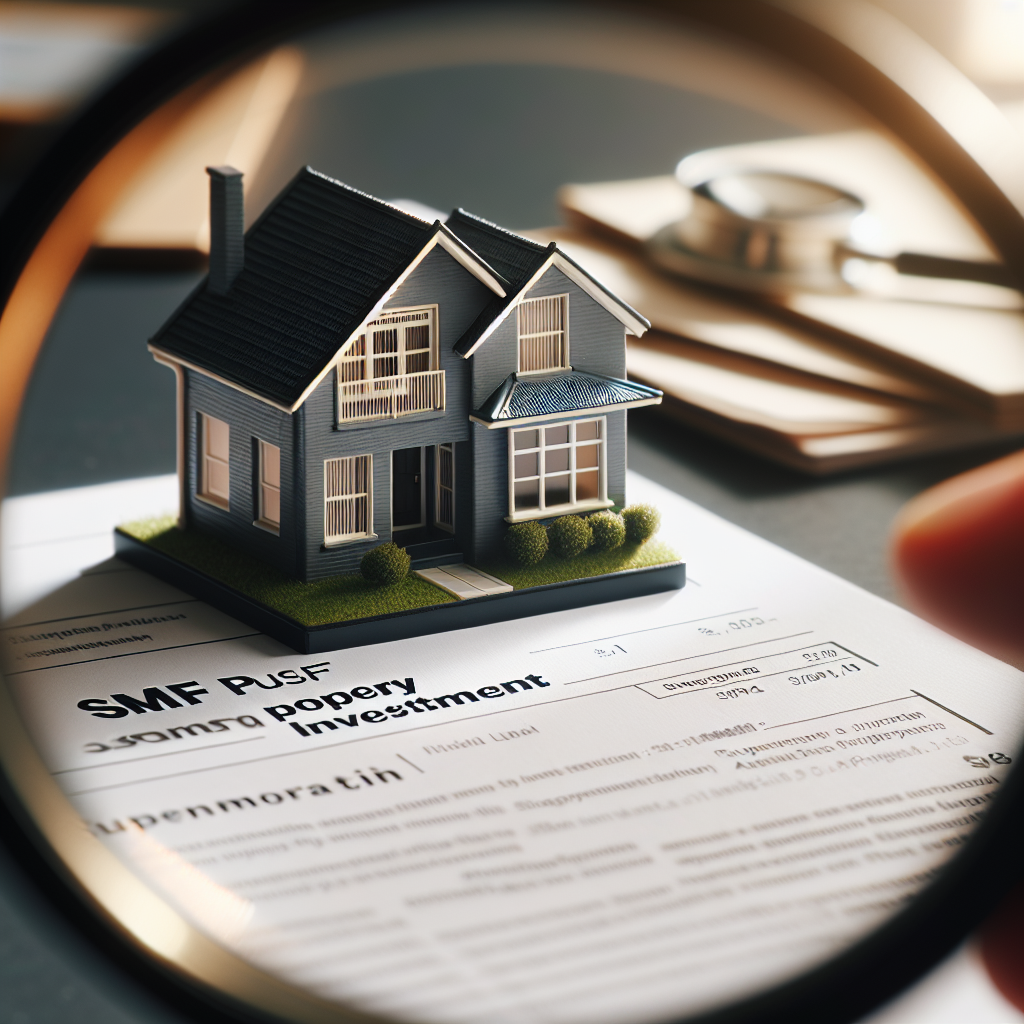In the quest for a comfortable retirement, Australians are increasingly exploring innovative strategies to build wealth. One question that frequently arises is: “Can I buy property with super?” The short answer is yes, but the journey involves careful planning, understanding regulatory requirements, and strategic implementation. This guide will walk you through the intricacies of using your superannuation to invest in property, a strategy that has captured the attention of SMSF trustees, property investors, financial advisors, mortgage brokers, and entrepreneurs alike.
Understanding Superannuation and Property Investment
Superannuation, Australia’s retirement savings system, was designed primarily to ensure financial security during retirement. However, beyond the traditional investment options, your super can be a powerful vehicle for property investment—provided you have the right structure in place.
At its core, superannuation is a long-term savings account with significant tax advantages, designed to accumulate wealth for your retirement years. Most Australians have their super managed by professional fund managers, but there’s another option that offers greater control: the Self-Managed Super Fund (SMSF).
An SMSF allows members to take direct control of their retirement savings and make independent investment decisions, including investing in residential or commercial property. This flexibility has made SMSFs increasingly popular among Australians looking to diversify their retirement portfolios with tangible assets.
According to the Australian Taxation Office (ATO), which regulates SMSFs, these funds must operate for the “sole purpose” of providing retirement benefits to members. This fundamental principle governs all SMSF activities, including property investments, and ensures that any property purchased with super funds is genuinely an investment for retirement—not for personal use.
Eligibility Criteria for Using Super to Buy Property
Before diving into property investment with your super, it’s essential to understand who can pursue this strategy. To buy property with super, you must:
- Establish a Self-Managed Super Fund (SMSF)
- Have sufficient funds within your SMSF (most financial experts recommend a minimum balance of $200,000-$300,000)
- Create an investment strategy that aligns with your retirement goals
- Ensure all fund members agree with the property investment decision
- Comply with all ATO regulations regarding SMSF investments
The question “can I buy property with super?” is one that requires careful consideration of these prerequisites. Without meeting these fundamental requirements, the path to property investment through superannuation becomes significantly more challenging, if not impossible.
Setting Up an SMSF for Property Investment
Establishing an SMSF involves several critical steps that must be executed with precision to ensure compliance with Australian regulations.
Creating Your SMSF
The first step is to establish your SMSF with a compliant trust deed. This legal document outlines the rules for operating your fund and must be prepared by a qualified professional. The trust deed should explicitly allow for property investments and borrowing arrangements if you plan to leverage your investment.
Once your trust deed is in place, you’ll need to:
- Register your SMSF with the ATO
- Obtain an Australian Business Number (ABN)
- Elect to be regulated by the ATO
- Open a dedicated bank account for your SMSF
- Create an investment strategy document
“Filing the right legal and accounting paperwork is crucial when establishing the appropriate structure for property investment through super,” notes industry experts. This foundation ensures your fund operates within regulatory guidelines from day one.
Transferring Existing Super into Your SMSF
After establishing your SMSF, you’ll need to transfer funds from your existing superannuation accounts. This process involves:
- Contacting your current super fund providers
- Completing rollover forms
- Providing your SMSF details
- Waiting for the funds to be transferred (which can take several weeks)
It’s worth noting that transferring your super to an SMSF may have implications for any insurance coverage you currently have through your existing super fund. Before proceeding, it’s advisable to review your insurance needs and consider whether you’ll need to arrange separate coverage.
Purchasing Property Through Your SMSF
Once your SMSF is operational and funded, you can begin the property acquisition process. This typically involves:
1. Finding a Suitable Property
When searching for property, remember that SMSF investments must pass the “sole purpose test”—meaning they must be for the exclusive benefit of providing retirement benefits to fund members. This means:
- You cannot live in the property
- You cannot rent it to yourself, family members, or other related parties
- The property must be purchased at market value
- All rental income must be returned to the SMSF
2. Financing Your Property Purchase
SMSFs can purchase property outright if sufficient funds are available, or they can borrow through a Limited Recourse Borrowing Arrangement (LRBA). An LRBA is a specialized loan structure that limits the lender’s recourse to the specific property being purchased, protecting other SMSF assets.
Setting up an LRBA involves:
- Creating a separate holding trust
- Arranging financing with a lender experienced in SMSF loans
- Ensuring the loan structure complies with ATO requirements
“LRBAs have become increasingly popular among SMSF trustees seeking to leverage their retirement savings for property investment,” industry data suggests. However, these arrangements come with stricter lending criteria and typically require larger deposits than standard investment loans.
3. Completing Due Diligence
Before finalizing any property purchase, comprehensive due diligence is essential. This includes:
- Property valuations
- Building and pest inspections
- Title searches
- Review of tenant arrangements (for properties with existing tenants)
- Cash flow projections
- Tax implications analysis
Each of these steps requires careful attention to detail and often necessitates professional guidance to ensure all regulatory requirements are met.
Benefits of Buying Property with Super
Investing in property through your SMSF can offer several significant advantages that make the question “can I buy property with super?” particularly relevant for strategic investors.
Tax Advantages
One of the most compelling reasons to buy property with super is the favorable tax treatment:
- Rental income is taxed at just 15% within an SMSF (compared to your marginal tax rate)
- If the property is held for more than 12 months, capital gains receive a one-third discount, effectively reducing the tax rate to 10%
- Once you enter the pension phase (typically after age 60), both rental income and capital gains may be completely tax-free
“The potential tax savings alone can make property investment through an SMSF an attractive proposition for many investors,” according to financial experts. These tax advantages can significantly enhance your investment returns over the long term.
Diversification and Asset Protection
Property investment through your SMSF allows you to:
- Diversify your retirement portfolio beyond traditional assets like shares and cash
- Protect your investment property from personal financial issues, as assets held within an SMSF generally cannot be accessed by creditors
- Create a more balanced investment strategy that may better withstand market volatility
As part of a diversified portfolio, property can provide both income (through rent) and potential capital growth, aligning with the long-term nature of retirement planning.
Strategic Control
Perhaps the most significant benefit of using your SMSF for property investment is the control it provides:
- You decide which property to purchase
- You determine the management approach
- You set the investment timeframe
- You align property investments with your broader retirement strategy
This level of control allows you to tailor your property investments to your specific retirement goals, a philosophy that aligns perfectly with Aries Financial Pty Ltd’s commitment to empowering clients with strategic guidance.
Challenges and Considerations
While the benefits are substantial, answering “can I buy property with super?” also requires understanding the potential drawbacks and challenges.
Complexity and Compliance
SMSF property investment involves navigating complex regulations:
- Strict compliance requirements must be met at all times
- Documentation and reporting obligations are extensive
- Annual audits are mandatory
- Penalties for non-compliance can be severe
“The regulatory framework governing SMSFs is complex and requires ongoing attention to detail,” caution industry specialists. Many SMSF trustees engage professional advisors to ensure continued compliance.
Liquidity Concerns
Property is an illiquid asset, which can pose challenges for an SMSF:
- You need to maintain sufficient cash reserves for fund expenses
- As members approach retirement age, the fund must be able to pay benefits
- Property cannot be quickly sold if cash is needed urgently
- Market downturns may coincide with the need to sell
Careful cash flow planning is essential to address these liquidity concerns and ensure your SMSF can meet its obligations to members.
Costs and Management
Operating an SMSF and managing property investments involves various costs:
- SMSF establishment and annual running costs
- Property acquisition costs (stamp duty, legal fees)
- Property management fees
- Maintenance and renovation expenses
- Insurance premiums
These costs must be factored into your investment analysis to determine whether property investment through your SMSF is financially viable.
The Role of Professional Advice
Given the complexities involved, professional advice is not just recommended—it’s essential. Before proceeding with property investment through your SMSF, consider consulting:
- SMSF specialists
- Financial advisors with SMSF expertise
- Mortgage brokers experienced in SMSF lending
- Accountants with property investment knowledge
- Legal professionals specialized in superannuation law
At Aries Financial Pty Ltd, we believe that informed decisions lead to better outcomes. Our philosophy centers on providing clients with the expertise and guidance needed to navigate the complexities of SMSF property investment while maintaining absolute integrity in all aspects of the process.
Conclusion: Making Informed Decisions
The question “can I buy property with super?” has a definitive answer: yes, it’s possible and potentially beneficial, but it requires careful planning, thorough understanding, and strategic implementation.
Property investment through your SMSF can be a powerful strategy for building wealth for retirement, offering tax advantages, portfolio diversification, and greater control over your financial future. However, it also demands meticulous attention to regulatory requirements, ongoing management, and long-term commitment.
As Australia’s Trusted SMSF Lending Specialist, Aries Financial Pty Ltd is committed to empowering clients with the knowledge and tools needed to make informed investment decisions. Our approach combines integrity, expertise, and a focus on long-term financial security—values that align perfectly with the serious responsibility of managing retirement funds.
Whether you’re an experienced SMSF trustee, a property investor exploring new opportunities, a financial advisor guiding clients, or an entrepreneur looking to diversify your investment portfolio, understanding the pathway to property investment through superannuation is a valuable addition to your financial knowledge.
Remember, successful SMSF property investment isn’t just about asking “can I buy property with super?”—it’s about determining whether this strategy aligns with your broader retirement goals and implementing it with the strategic guidance and expertise that will maximize your investment potential.


